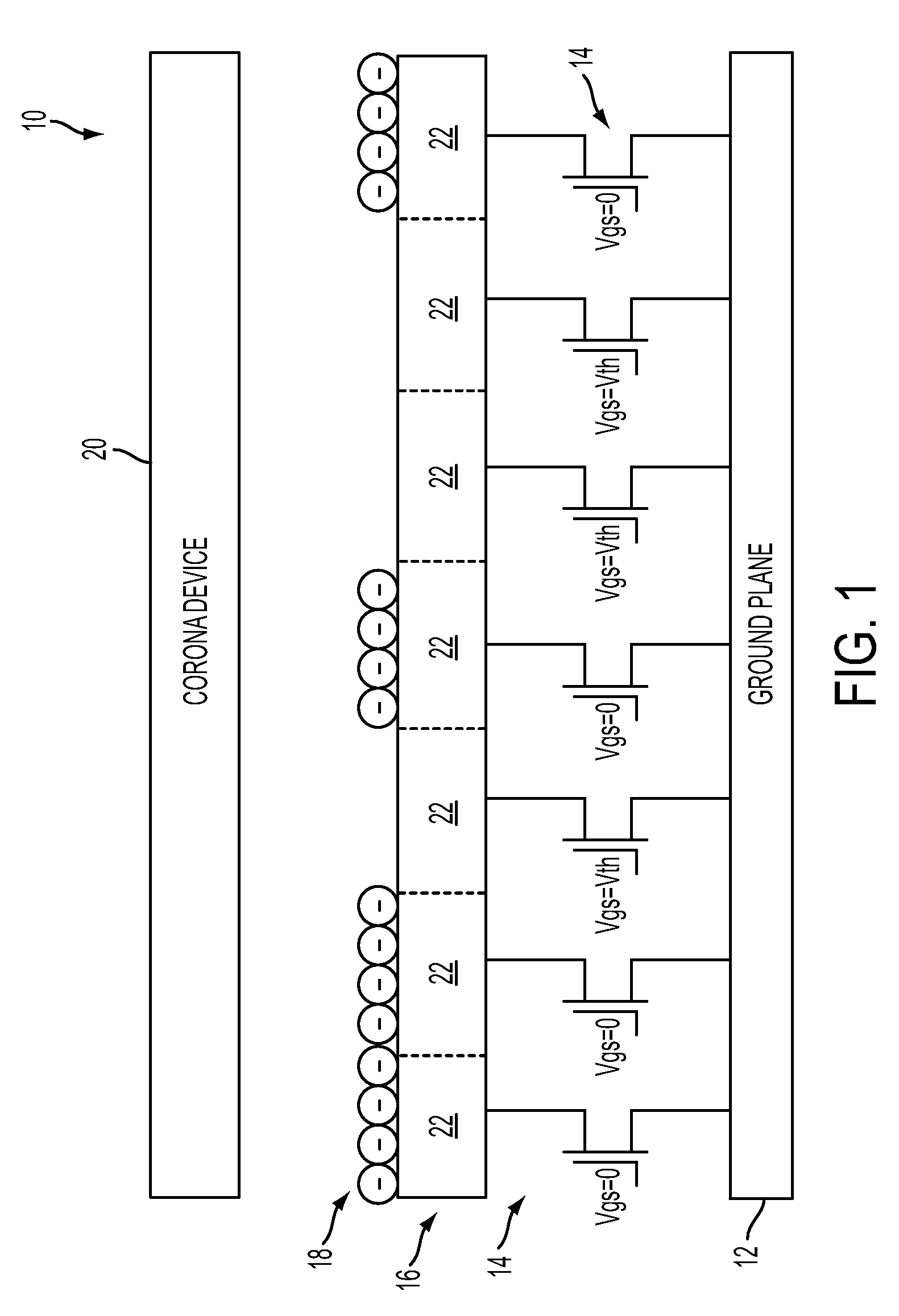Image forming apparatus with a TFT backplane for xerography without a light source
a technology of xerography and backplane, which is applied in the direction of electrographic process apparatus, printing, instruments, etc., can solve the problems of low charge mobility, sensitivity to light shock, and not the only possible way to generate latent images, and achieve the effect of facilitating tft control
- Summary
- Abstract
- Description
- Claims
- Application Information
AI Technical Summary
Benefits of technology
Problems solved by technology
Method used
Image
Examples
Embodiment Construction
[0017]In accordance with various features described herein, systems and methods are described that facilitate using a TFT backplane with discharged area development (DAD) for latent image formation (e.g., whereby discharged area(s) on the imaging member surface correspond to an image on a print medium, and charged areas correspond to background). The described systems and methods facilitate forming latent images without the direct coupling of a high-voltage power source (HVPS) to the surface of the imaging member.
[0018]The current innovation proposes using corona charging to first create a background surface potential (Vbg) followed by selectively discharging individual pixels by using an array of TFTs to supply free charge carriers to reduce the electrostatic surface potential to nearly zero. This is followed by discharged area development to develop the latent image on a print medium (e.g., paper). An advantage of the described innovation is that it does not require a HVPS to driv...
PUM
 Login to View More
Login to View More Abstract
Description
Claims
Application Information
 Login to View More
Login to View More - R&D
- Intellectual Property
- Life Sciences
- Materials
- Tech Scout
- Unparalleled Data Quality
- Higher Quality Content
- 60% Fewer Hallucinations
Browse by: Latest US Patents, China's latest patents, Technical Efficacy Thesaurus, Application Domain, Technology Topic, Popular Technical Reports.
© 2025 PatSnap. All rights reserved.Legal|Privacy policy|Modern Slavery Act Transparency Statement|Sitemap|About US| Contact US: help@patsnap.com



